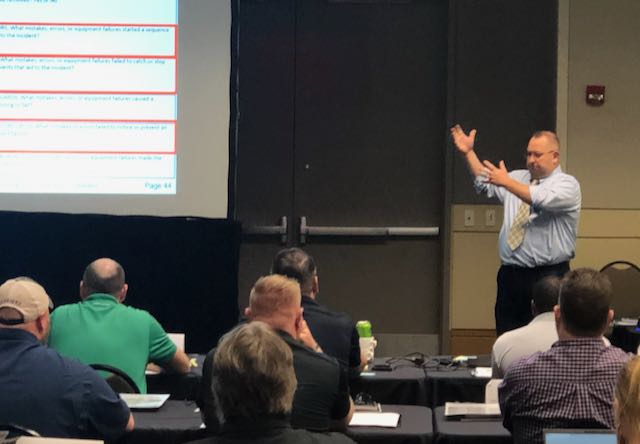Top 3 Reasons for Bad Root Cause Analysis

Managers Complain But Don’t Fix the Top 3 Reasons for Bad Root Cause Analysis
I’ve heard many high-level managers complain that they see the same problems happening over and over again. They just can’t get people to find and fix the problems’ root causes. Why does this happen? What can management do to overcome bad root cause analysis? Read on to find out.
Reason for Bad Root Cause Analysis #1: BLAME
Blame is the number one reason for bad root cause analysis.
Why?
Because people who are worried about blame don’t fully cooperate with an investigation. They don’t admit their involvement. They hold back critical information. Often this leads to mystery accidents. No one knows who was involved, what happened, or why it happened.
As Bart Simpson says:
“I didn’t do it.”
“Nobody saw me do it.”
“You can’t prove anything.”
Blame is so common that people take it for granted.
Somebody makes a mistake and what do we do? Discipline them.
If they are a contractor, we fire them. No questions asked.
And if the mistake was made by senior management? Sorry … that’s not how blame works. Blame always flows downhill. At a certain senior level management becomes blessed. Only truly horrific accidents like the Deepwater Horizon or Bhopal get senior managers fired or jailed. Then again, maybe those accidents aren’t bad enough for discipline for senior management.
Think about the housing collapse of 2008. What senior banker went to jail?
But be an operator and make a simple mistake like pushing the wrong button or a mechanic who doesn’t lock out a breaker while working on equipment? You may be fired or have the feds come after you to put you in jail.
Back to the Deepwater Horizon accident. Talk to Kurt Mix. He was a BP engineer who deleted some text messages from his personal cell phone to clean it up AFTER he had turned it over to the FBI, and they gave it back. He faced criminal charges.
Or ask the two BP company men who represented BP on the Deepwater Horizon and faced years of criminal prosecution.
If those examples don’t convince you … read this short article:
How do you stop blame and get people to cooperate with investigations? Here are two best practices.
1. Start Small…
If you are investigating near-misses that could have become major accidents and you don’t discipline people who spill the beans, people will learn to cooperate. This is especially true if you reward people for participating and develop effective fixes that make the work easier and their jobs less hazardous.
Small accidents just don’t have the same cloud of blame hanging over them so if you start small, you have a better chance of getting people to cooperate even if a blame culture has already been established.
2. Use a SnapCharT® Diagram to Facilitate Your Investigation and Investigation Presentations to Management
We’ve learned that using a SnapCharT® Diagram to facilitate an investigation and to show the results to management reduces the tendency to look for blame. The SnapCharT® Diagram focuses on what happened. “Who did it” becomes less important.

Often, the SnapCharT® Diagram shows that there were several things that could have prevented the accident and that no one person was strictly to blame.
Want to learn more about SnapCharT® Diagrams? Attend any TapRooT® Training, and you will learn how to use them. See:

Reason for Bad Root Cause Analysis #2: Ask What, NOT Why
Have you ever seen someone use 5-Whys to find root causes? They start with what they think is the problem and then ask “Why?” five times. Unfortunately, this easy method often leads investigators astray.
Why?
Because they should have started by asking what and how before they asked why.
Many investigators start asking why before they understand what happened. This causes them to jump to conclusions. They don’t gather critical evidence that may lead them to the real root causes of the problem. They tend to focus on a single Causal Factor and miss several others that also contributed to the problem.
How do you get people to ask what instead of why?
Once again, the SnapCharT® Diagram is the best tool to get investigators focused on what happened, find the incident details, and identify all the Causal Factors and the information about each Causal Factor that the investigator needs to identify each problem’s root causes.
If you would like to see a comparison of the 5-Why technique to advanced root cause analysis, CLICK HERE. I think you will be convinced to stop asking “why” first.

Reason for Bad Root Cause Analysis #3: You Must Go Beyond Your Current Knowledge
Many investigators start their investigation with a pretty good idea of the root causes they are looking for. They already know the answers. All they have to do is find the evidence that supports their hypothesis.
What happens when an investigator starts an investigation with the answers in mind?
They jump to conclusions.
They ignore evidence that is counter to their hypothesis. This problem is called:
It has been proven in many scientific studies.
But there is an even bigger problem for investigators who think they know the answer. They often don’t have the training in human factors and equipment reliability to recognize the real root causes of each of the Causal Factors. Therefore, they only look for the root causes they know about. They don’t get beyond their current knowledge.
What can you do to help investigators look beyond their current knowledge and avoid confirmation bias?
Have them use the SnapCharT® Diagram and the TapRooT® Root Cause Tree® Diagram to find root causes. You will be amazed at the root causes your investigators discover that they previously would have overlooked.
How can your investigators learn to use the TapRooT® Root Cause Tree® Diagram? Once again, send them to TapRooT® Training. CLICK HERE for upcoming public course dates and locations. Or CONTACT US for a quote for a course at your site.
That’s It! Now Overcome the Top 3 Reasons for Bad Root Cause Analysis!
The TapRooT® Root Cause Analysis System can help your investigators overcome the top 3 reasons for bad root cause analysis.
And that’s not all. There are many other advantages for management and investigators (and employees) when people use TapRooT® RCA to solve problems.
If you haven’t tried TapRooT® Root Cause Analysis to solve problems, you don’t know what you are missing.
If your organization faces:
- Quality Issues
- Safety Incidents
- Repeat Equipment Failures
- Sentinel Events
- Environmental Incidents
- Cost Overruns
- Missed Schedules
- Plant Downtime
You need to apply the best root cause analysis system: TapRooT® RCA.
Learn more at THIS LINK. And see the dates and locations for our public TapRooT® Training HERE.




